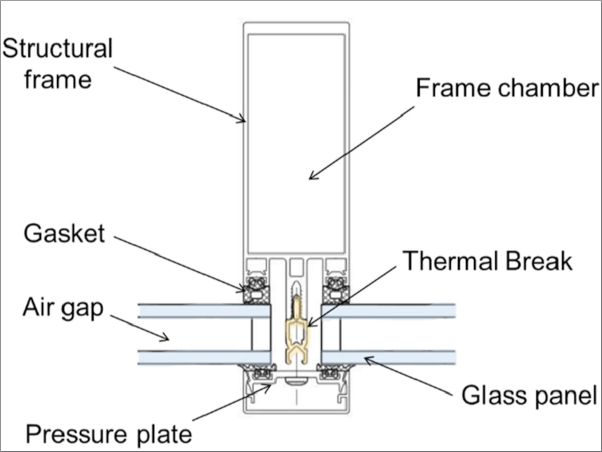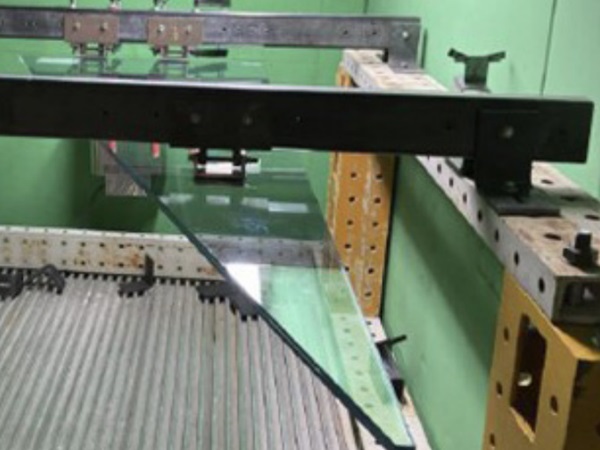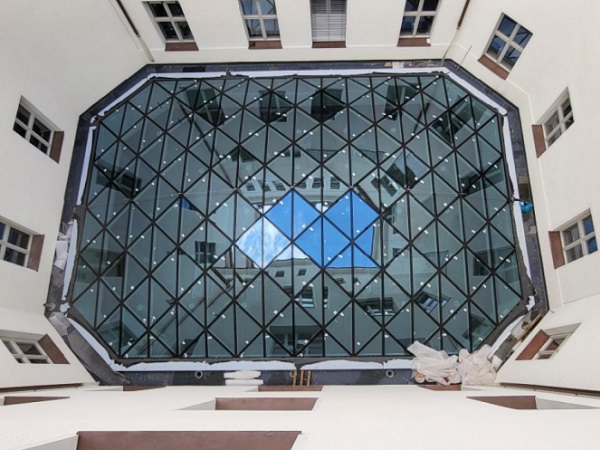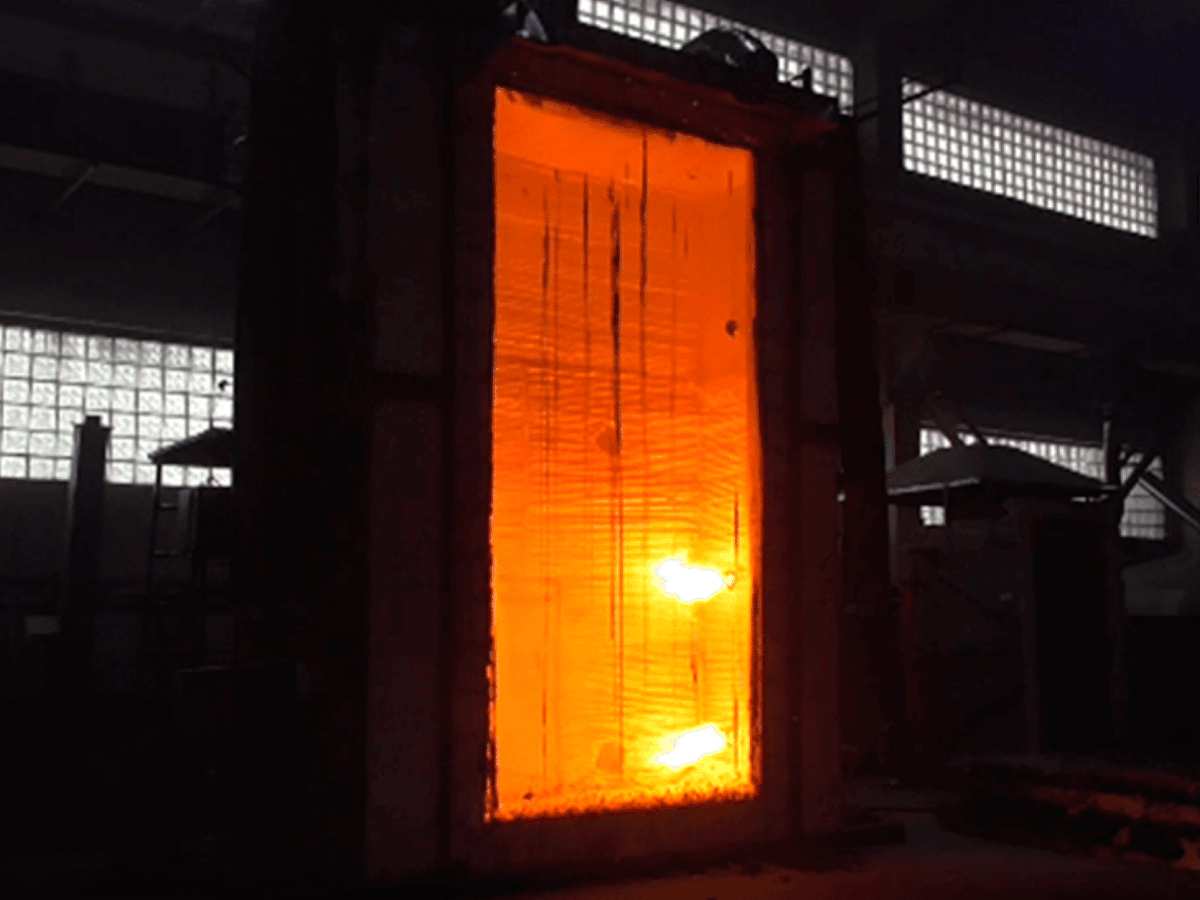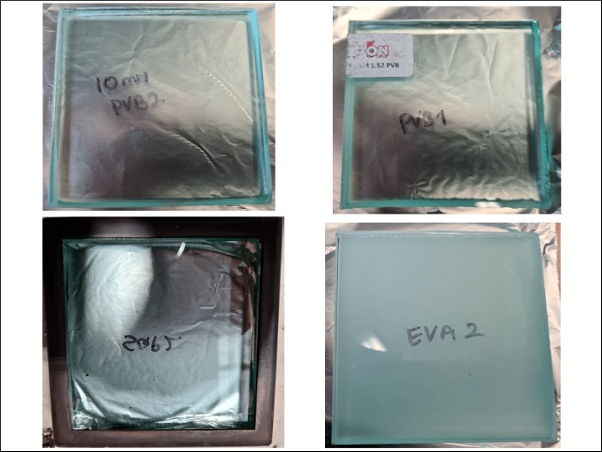"A good sprinkler system eliminates the need for fire-rated glass. "
"All fire-rated glass is compatible with sprinkler systems."
"Sprinkler systems can deluge glass with water and keep it in place during a fire."
"If the sprinklers extinguish the fire, it wont matter if glass breaks."
As you might suspect, none of the above would be the correct answer. Yet these are commonly held misconceptions about the relationship between fire sprinklers and glass. (For a general overview of fire-rated glass, see the article, An Introduction to Fire-Rated Glass.)
A good sprinkler system eliminates the need for fire-rated glass.
On the surface it sounds logical: Install a top-notch suppression system that activates early and you will never need to rely on glass to contain a fire, right? That would certainly seem desirable, but in reality a number of factors make the assumption invalid.
First, since sprinklers are "active" systems, they require a number of steps to happen in order for them to work properly. For example, one brand of sprinklers had to be recalled recently because it was discovered that the sprinklers required more water pressure than many buildings could support. Although structurally sound, the system could not operate properly without the right force to activate it.
Water pressure is only one of many such factors. Water supply can be accidentally turned off, sprinkler heads can be unintentionally painted over, PVC water pipes can melt during a fire, etc. Add to that list the possibility that the sprinklers may be aging, poorly maintained or improperly installed, and you begin to see the danger of relying exclusively on a single system.
By and large, sprinklers are reliable and have saved countless lives. But they should not be seen as a replacement for more "passive" systems such as fire-rated glass that can provide a degree of fire protection without depending on any outside factors.
All fire-rated glass is compatible with sprinkler systems.
On the flip side, just because glass bears the label "fire-rated" doesn not necessarily mean that it will work well with sprinklers in offering fire protection. In fact, some fire-rated glass shouldn not be used anywhere near sprinklers, because the result could be disastrous.
How is this possible? Certain types of specially tempered glass (such as Pyroedge, SuperLite I, Fireglass20, etc.) have achieved a 20 minute fire rating. To earn that level of listing in the United States, glass is not required to undergo the fire hose stream test that is mandatory for any rating higher than 20 minutes. Specially tempered glass is unable to survive that test.
The fire hose stream test is significant in that it shows how the glass will respond when hit by water during a fire. When specially tempered glass is hot, it cannot withstand the thermal shock of even a small amount of cool water. As a result if hit by the spray of a sprinkler or fire hose, the hot glass will shatter and fall out of the frame - leaving a gaping hole for flames and smoke to spread through. This can happen in much less than 20 minutes, rendering the rating worthless.
Wired glass and many of the wireless alternatives (the FireLite family of products, Pyrostop and SuperLite II) have passed the fire hose stream test and are therefore more appropriate choices when sprinklers are nearby.
Sprinkler systems can deluge glass with water and keep it in place during a fire.
Realizing that specially tempered glass and most non-rated glass may shatter if hit by water during a fire, some people have tried to develop creative strategies to overcome the problem. One proposed solution would attempt to bathe the glass with water before the glass gets hot. In theory, a "deluge" sprinkler system could be activated that would prevent the glass from ever experiencing thermal shock. This concept was actually tested by one sprinkler manufacturer at an independent laboratory. Initially, it looked promising. When the test fire was started far away from the glass, the sprinklers activated early enough to completely douse the glass before the fire got too close. However, when the source of the fire was moved nearer to the glass, the glass shattered every time when the sprinklers activated.
Additionally, a deluge system only works when the water coats the entire glass surface uniformly. If blinds, papers or furniture block the water, the glass may still vacate the opening, due to the stress caused by different surface temperatures.
Proponents of deluge sprinkler systems suggest working around the problem by simply making sure blinds and furniture are far enough away from the glass so they do not get in the way of the water from sprinklers. However, the likelihood of future building tenants abiding by such restrictions is rather slim. As you can see, this approach attempts to provide an answer and ends up creating a new list of questions. A much less complicated approach would be to specify appropriate fire-rated glazing in the opening. Again, the passive nature of fire-rated glass avoids many of the complications that arise when dependence on active systems is increased.
If the sprinklers extinguish the fire, it wont matter if glass breaks.
We have raised a number of potential red flags regarding sprinklers. But let us suppose for a moment that there has been a fire and the sprinklers have worked exactly as intended. The fire is put out even before building occupants have the chance to evacuate. Would it really matter if the glass in some of the windows and doors had been broken in the process?
The answer is a definite yes. One of the primary concerns in extinguishing a fire is smoke, since the vast majority of fire-related deaths are caused by smoke inhalation. Sprinklers create an enormous volume of smoke. If glass has broken, the smoke will be free to travel throughout the building, which means it can still threaten life safety even after the fire is extinguished. Fire-rated glass is intended to inhibit not only the spread of flames, but smoke as well.
As you can see, the relationship between sprinklers and fire-rated glass is much more complex than it initially appears. By utilizing both, you combine the suppression capabilities of sprinklers with the reliable containment of fire-rated glass. The result will be safer facilities that offer the best fire protection possible.
by Jerry Razwick
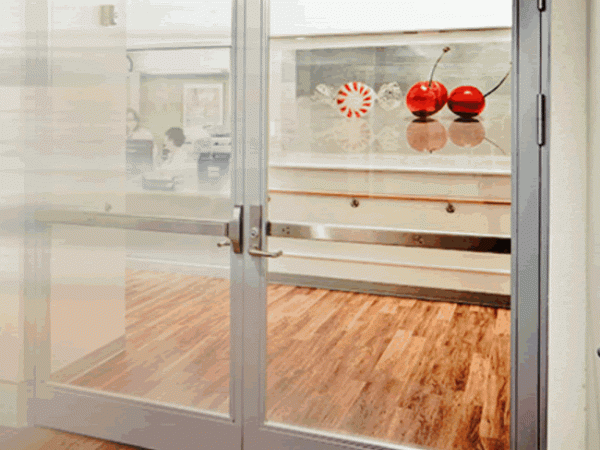
Date: 10 July 2008
There is a great deal of confusion in the industry about how sprinklers and glass work together to provide fire protection. Which of these statements would you agree with?
 600450
600450
Jerry Razwick, Technical Glass Products
2008-07-10T13:00:00
The Truth About Sprinklers and Glass
glassonweb.com 
